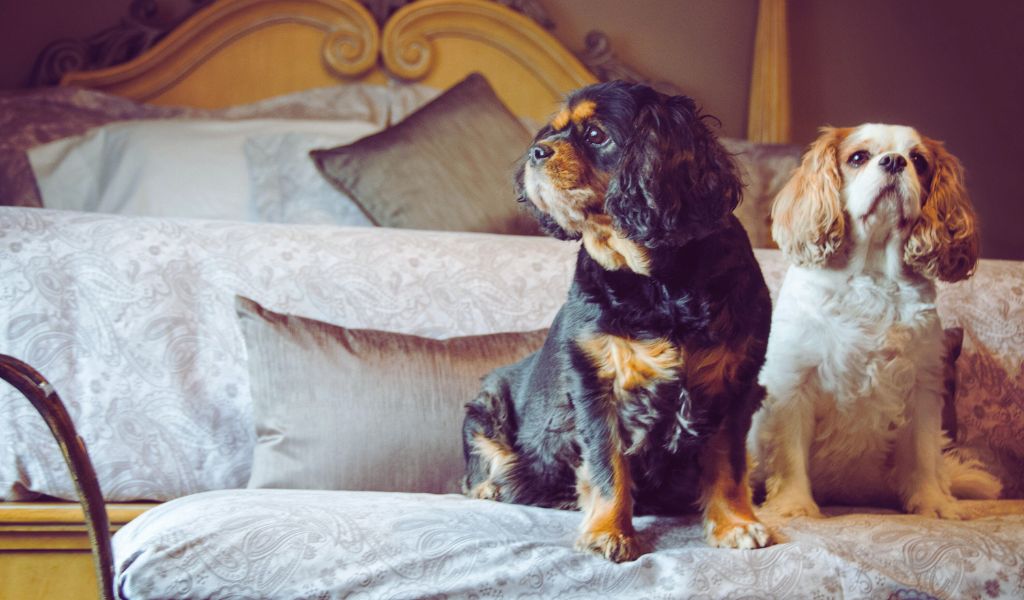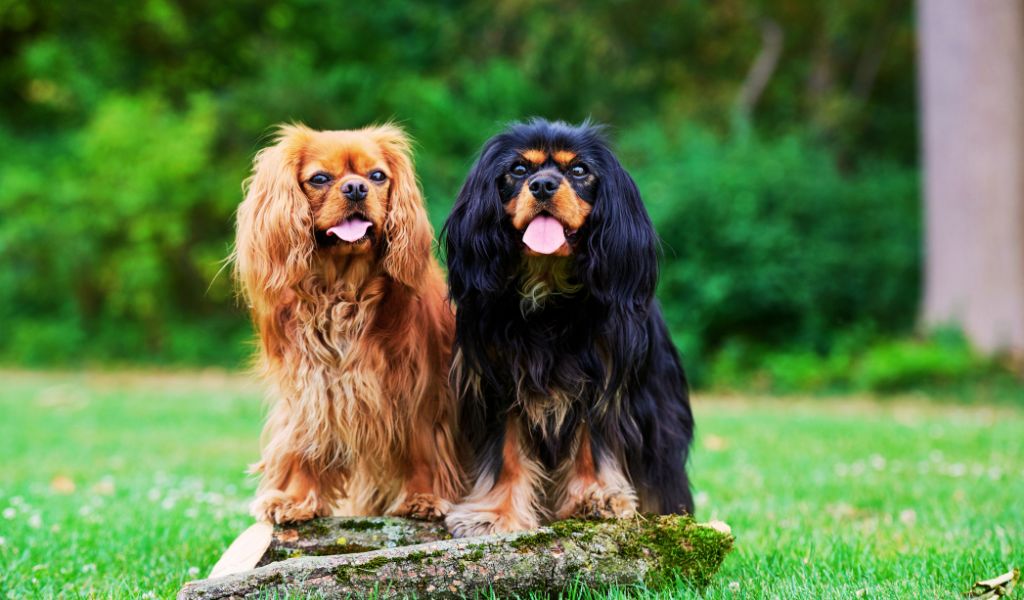Introduce your Cavalier to other pets at a young age. Use reward based training when your Cavalier responds correctly to the other animals. Try to maintain a peaceful environment to prevent anxiety. Create boundaries and safe places for your Cavalier and the other pets to retreat to when they need.
Cavalier King Charles Spaniels are known for their affectionate nature and beautiful appearance. But what happens when you want to introduce them to other pets?
Teaching Your Cavalier King Charles Spaniel to Get Along with Other Pets
Understanding the Breed
Understanding the temperament and characteristics of the Cavalier King Charles Spaniel is essential in teaching them to get along with other pets.
They are generally friendly, but their behaviour can vary.
Breed Temperament
Cavalier King Charles Spaniels are known for their gentle and affectionate nature.
They are usually good with children and other pets, but individual personalities may differ.
Common Challenges
Some common challenges in teaching your Cavalier King Charles Spaniel to get along with other pets include jealousy, territorial behaviour, and lack of socialisation.
Socialisation Techniques
Socialisation is key to teaching your Cavalier King Charles Spaniel to get along with other pets.
Here’s how to do it:
Early Exposure
Introducing your Cavalier King Charles Spaniel to other pets at a young age can make the process smoother.
Early exposure helps them become accustomed to different animals.
Positive Reinforcement
Using positive reinforcement techniques like treats and praise can encourage good behaviour around other pets.
Professional Training
If you’re struggling, professional training can be an option.
Trainers with experience in teaching Cavalier King Charles Spaniels to get along with other pets can provide personalized guidance.
Creating a Harmonious Environment
Ensuring a peaceful environment is essential for teaching your Cavalier King Charles Spaniel to get along with other pets.
Setting Boundaries
Establishing clear boundaries between pets can prevent conflicts and promote understanding.
Monitoring Interactions
Keeping a close eye on interactions between your Cavalier King Charles Spaniel and other pets can help you intervene if necessary.
Providing Separate Spaces
Having separate spaces for each pet can reduce tension and allow them to have their own territory.

Dealing with Specific Pets
Different pets require different approaches. Here’s how to handle various situations:
With Cats
Cats and dogs have different communication styles.
Understanding these differences can help in teaching your Cavalier King Charles Spaniel to get along with cats.
Cats
Vocalisation: Cats meow, purr, hiss, and growl to communicate. Meowing is often directed at humans, while purring usually signifies contentment.
Body Language: A cat’s tail, ears, and posture can convey different emotions. For example, an upright tail with a quiver at the end often means a very happy cat, while flattened ears may indicate fear or aggression.
Scent Marking: Cats have scent glands on various parts of their body and use them to mark their territory by rubbing against objects or people.
Facial Expressions: Subtle changes in a cat’s face, especially around the eyes and mouth, can indicate their mood.
Touch: Cats may nuzzle or head-butt to show affection.
Dogs
Vocalisation: Dogs bark, whine, howl, and growl. Barking can mean many things, from excitement to warning, while whining usually indicates distress or a desire for attention.
Body Language: A wagging tail often means a happy dog, but the speed and direction of the wag can mean different things. Raised hackles, bared teeth, or a lowered tail can indicate various emotions.
Scent Marking: Like cats, dogs use scent to mark territory, but they often do this through urination.
Facial Expressions: Dogs also use facial expressions, and their eyes, ears, and mouth can provide clues to how they’re feeling.
Touch: Dogs may nudge, paw, or lean against humans or other animals to communicate different needs or feelings.
While there are similarities in how cats and dogs communicate, such as through vocalisation and body language, there are also species-specific differences.
Cats tend to be more subtle and complex in their communication, while dogs are often more overt and expressive.
With Other Dogs
Understanding the dynamics between different dog breeds can be crucial in teaching your Cavalier King Charles Spaniel to get along with other dogs.
With Small Pets
Small pets like hamsters or birds may require special consideration. Ensuring safety and controlled interactions is key.
Health Considerations
Health can play a role in how your Cavalier King Charles Spaniel interacts with other pets.
Regular Check-ups
Regular veterinary check-ups can ensure that your Cavalier King Charles Spaniel is healthy and free from conditions that might affect their behaviour.
Understanding Allergies
Some pets may have allergies to each other. Understanding and managing these can prevent discomfort and issues.
FAQs
What is the best age to start socializing my Cavalier King Charles Spaniel with other pets?
The best age is usually when they are puppies, around 7-16 weeks old.
Can Cavalier King Charles Spaniels live with cats?
Yes, with proper introduction and training, they can live harmoniously with cats.
How do I handle aggression in my Cavalier King Charles Spaniel towards other pets?
Professional training and understanding the root cause of aggression can help in managing this behaviour.
Is it safe to leave my Cavalier King Charles Spaniel alone with other pets?
It depends on the individual pets and their relationship. Monitoring and understanding their behaviour is essential.
What if my Cavalier King Charles Spaniel doesn’t get along with a specific pet?
Professional guidance, patience, and understanding the underlying issues can help in resolving conflicts.
Can I introduce a Cavalier King Charles Spaniel to an older pet?
Yes, with careful introduction and consideration of the older pet’s temperament and needs.
Teaching your Cavalier King Charles Spaniel to get along with other pets is a rewarding journey that requires understanding, patience, and the right techniques.
By following this comprehensive guide, you can create a harmonious environment for all your pets.
Remember, every pet is unique, and what works for one may not work for another.
Stay positive, and don’t hesitate to seek professional help if needed.

